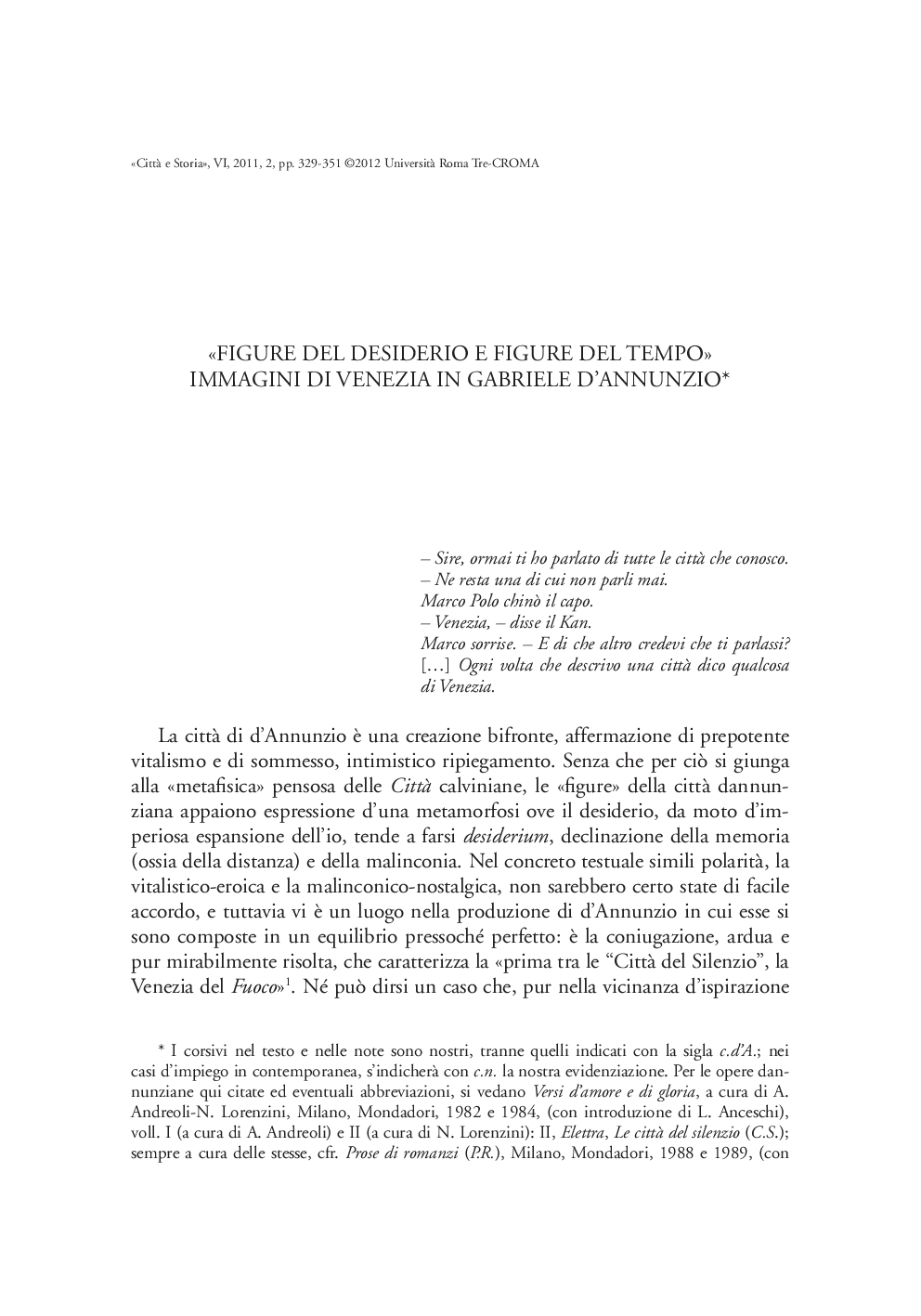Indice degli autori
CITTÀ & STORIA » 2011/2 » La città dei letterati
ISSN 1828-6364
Giacon Maria Rosa
«Figure del desiderio e figure del tempo». Immagini di Venezia in Gabriele d'Annunzio
pp.329-351, DOI 10.17426/60572
Articoli
Abstract: This essay seeks to demonstrate that the image of the Dannunzian city comes from the combining of two opposite, though complementary, elements: desire as the ego’s triumphant expression and desiderium, a kind of nostalgic withdrawal into oneself and one’s own memories. In fact, through examples drawn from d’Annunzio’s poetry (Le città del silenzio) and his so called «prosa di ricerca» (Le faville del maglio), it is proved that the Dannunzian city is a symbolic creation deriving from literary sources and imagination («trasognamento») rather than biographic experiences. However hard to be related they may be, desire and desiderium appear to be perfectly balanced in d’Annunzio’s Venetian novel Il fuoco. Firstly, Venice, a city d’Annunzio loved to visit many times over the years, is the natural epitome of the combination between reality and artistic imagination, life and literature. Secondarily, Il fuoco is based on an admirably constructed dialectic: the two heroes Stelio Èffrena and Foscarina, also called Persefone and Perdita, are linked very successfully, the elder being a Dionysus’ personification, the latter a nostalgic figure which symbolizes the inner-self as well as Dionysian enthusiasm. The paper concludes by observing that d’Annunzio’s Taccuini supply with documentary evidence how the writer managed to link his characters to Venice scenery interpreting the city views like symbolical emanations. Such a successful balance is not to be found in other masterpieces (Notturno, Licenza) d’Annunzio will later dedicate to Venice.

Referenze
- download: n.d.
- Url: http://archivio.centroricercheroma.it/?contenuto=indice-degli-autori&idarticolo=992
- DOI: 10.17426/60572
- citazione: M. Giacon, «Figure del desiderio e figure del tempo». Immagini di Venezia in Gabriele d'Annunzio, "Città & Storia", VI/2, pp.329-351, DOI: 10.17426/60572

